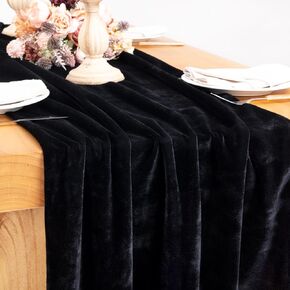- Shopping, made easy.
- /
- Get the app!
Dinner Fork: 7.625” 78 g
Salad Fork: 6.75” 65 g
Dinner Knife: 9” 95 g
Teaspoon: 6.75” 75 g
Tablespoon: 7.625” 90 g
PVD technology coating process is a very different manufacturing process from traditional plating, with different heat elements and a vacuum environment present.
The titanium is mixed with the desired color agent, then the mixture is heated up and vaporized, coating the pieces with a fine film finish over the stainless steel. It gives them a more even overall finish, and is one of the very few ways right now to achieve the colors that we want to do (usually if you see colored flatware, this is the technique flatware companies use to achieve it). However, the process is not without fault, and sometimes there are different elements missed or incorrectly done during the process that can cause the pieces to lose their finish more quickly. If this were to occur. Certain additives in water can cause discoloration, and combined with the high heat of a dishwasher cycle, it could cause potential color warping or staining.
An important rule of thumb to remember is that while the color definitely shouldn't be streaking off, at the end of the day it is still a finish, so it can potentially be damaged. While the PVD finish is very durable and can withstand everyday use, it's important to remember that the it does have limitations, and is not 100% infallible or impenetrable to nicks and marks
Using a non-citrus stainless steel liquid detergent is recommended, as any powders or pacs tend to be abrasive or harsh and can ruin the finish if they are not dissolved properly. This includes especially the Finish brand tabs with the red power balls in the middle, which seem to be the hardest to dissolve. Also, make sure you're avoiding any hard or abrasive sponges or scrubbing pads when washing.
 Socomi Emerald Green Velvet Table Runner 20 x 120 Inches 10ft Luxurious Thick Cotton Christmas Thanksgiving Wedding Runner for New Year Bridal Shower
KWD 8
Socomi Emerald Green Velvet Table Runner 20 x 120 Inches 10ft Luxurious Thick Cotton Christmas Thanksgiving Wedding Runner for New Year Bridal Shower
KWD 8
 Obstal Clear Plastic Tablecloth 54 x 78 Inch, 100% Waterproof Oil-Proof Spill-Proof Vinyl PVC Table Cloth, Wipeable Rectangle Tablecloth Protector for Dining Table, Outdoor and Indoor Uses, Clear
KWD 8.500
Obstal Clear Plastic Tablecloth 54 x 78 Inch, 100% Waterproof Oil-Proof Spill-Proof Vinyl PVC Table Cloth, Wipeable Rectangle Tablecloth Protector for Dining Table, Outdoor and Indoor Uses, Clear
KWD 8.500
 HALOVIE 13 x 70 Inch Glam Table Runner with Diamante Strip, Rectangular Dining Table Dresser Runners for Home Kitchen Party Wedding Festival Christmas Decorations
KWD 9.500
HALOVIE 13 x 70 Inch Glam Table Runner with Diamante Strip, Rectangular Dining Table Dresser Runners for Home Kitchen Party Wedding Festival Christmas Decorations
KWD 9.500
 Kadut Rectangle Tablecloth (60 x 126 Inch) Beige Rectangular Table Cloth for 8 Foot Table | Heavy Duty Washable Table Cloth for Dinner, Parties, Weddings, | Wrinkle-Resistant Dining Table Cover
KWD 4.500
Kadut Rectangle Tablecloth (60 x 126 Inch) Beige Rectangular Table Cloth for 8 Foot Table | Heavy Duty Washable Table Cloth for Dinner, Parties, Weddings, | Wrinkle-Resistant Dining Table Cover
KWD 4.500